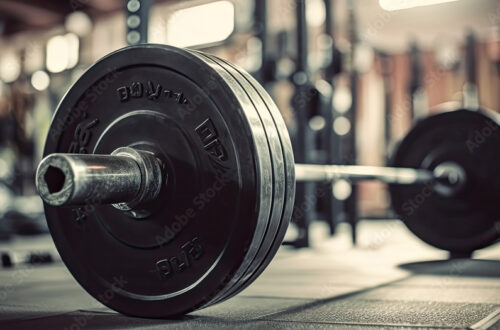Effective Periodized Nutrition Plan for Athletes
To create a nutrition plan that is simple, easy to follow, and effective in supporting our athletic goals, it is crucial to understand numerous complex mechanisms and principles. Once mastered, life becomes much simpler. It turns out that you don’t have to (although you might want to) sift through countless books or browse endless cooking blogs for recipes and tips from culinary gurus. You can live by rotating a few dishes made from three ingredients, achieving excellent results, and your health will not suffer—in fact, I dare say it will improve. The eternal question, “What should I eat today?” disappears, freeing your mind to focus on other aspects of life, like relaxation. Nothing bad will happen to you if you take this approach. Culinary Instagram bloggers hate this concept. The idea of diversity in meals is often force-fed to us because it appeals visually on social media, where everyone feels the need to show off something new. But honestly—who needs 300 kinds of salads?
The Reality of Culinary Trends
On a more serious note, the sheer volume of recipes and dietary advice online is staggering, even more so than content about how, where, and how much to train. Food photography, presentation, and preparation have become full-time professions, with certain websites holding dominant positions in the space for years. This is supplemented by a flood of culinary content in social media streams. Alongside this, updated nutritional knowledge is often interpreted superficially or presented in overly simplified formats to suit short attention spans. Add to that the stream of trendy diets—whether carbs are “bad,” fats are “evil,” or proteins will “destroy your kidneys.” After more than 20 years of watching such trends online, I can confidently say most of it is exaggerated nonsense. Marketing lingo often pushes strategies that prioritize sales over health benefits—unless improving health happens to be a lucky side effect.
We also have elaborate culinary trends turning meal preparation into an art form (think dozens of cooking shows and competitions featuring chefs and hundreds of hours of content on TV). They showcase fantastically complex dishes made with ingredients unavailable to most people, marked with Michelin stars as symbols of their creators’ and venues’ greatness. This whirlwind creates a cognitive overload tied to one of life’s most basic physiological acts—eating. To put it simply, the essence of eating is to provide the body with necessary energy to function daily. The amount of energy required at a given moment is influenced by various factors, both external and internal, including our athletic goals.
The Seasonality of Nutrition in Sports
In amateur sports, as in professional sports, nutrition is seasonal or, to use a more professional term, periodized—just like training. It depends on the type of training, athletic goals, competitions we are preparing for, and more. So, while the idea of eating the same thing year-round might sound convenient and aligns with my philosophy of simplifying life, it is unfortunately not realistic. A nutrition plan within a given macrocycle should support our goals on two essential levels: recovery and energy for effective training sessions. Competition-day nutrition is an entirely separate topic, requiring specific strategies that we will discuss later. Similarly, supplementation—something we aim to minimize initially—will be addressed later. After all, as the name suggests, it’s meant to complement a well-composed nutritional strategy.
Striking a Balance Between Simplicity and Effectiveness
At least a few elements are crucial when designing a nutrition plan, even though they might sound like buzzwords from social media. The key is not to fall for trends. From the perspective of human existence, we only recently emerged from caves, and the nutritional fads of the last hundred years weren’t necessary for surviving multiple catastrophes that humanity has endured. And no, survival wasn’t aided by fast food chains. Someone might now shout, “Not another paleo diet advocate!” and walk away. But surprise—I’m not.
It will be straightforward because no amateur who squeezes 10 hours for training into their schedule has time to spend another 10 hours in the kitchen. That would be necessary if we were chasing Instagram-like ideals of food aesthetics and complexity. Some sacrifices are essential for long-term sustainability. One of these is the visual appeal of dishes. Another is the complexity of their composition, which should be dictated by macro- and micronutrients, not how the final dish looks on an iPhone camera.
The complexity of a dish is not equivalent to its nutritional value. Conversely, simple meals can deliver all the required macro- and micronutrients without compromise. It is vital to understand the nutritional content of both unprocessed and semi-processed ingredients. Life has shown that simplicity and speed require compromises—like buying canned vegetables when there’s no time to grow or harvest them.
Navigating Myths and Fads in Nutrition
Trendy exclusions of specific nutrients or the focus on one macro over others—like the eternal debates over “more protein!” or “more carbs!”—are overly simplistic and don’t hold up to scrutiny. Unless you have medical indications or diagnosed allergies, exclusion diets are unnecessary for most people. Dietary recommendations should be specific to health needs, athletic phases, and anthropometric conditions—not slogans from marketing campaigns.
Metabolism is often misunderstood. Contrary to popular myths, it is neither “accelerated” nor “slowed” in magical ways—it is simply a chemical process. Everyone has the same basic metabolic functions, but how we support and understand them varies greatly. Similarly, people respond differently to foods, just as bodies react differently to training stimuli. Overburdening the digestive system at the wrong time can hinder recovery. For example, when you’re exhausted, your brain seeks immediate survival solutions, leading to cravings for quick calories—hence the familiar image of a tired office worker guzzling soda and snacks to stay awake.
The Role of Sleep and the Foundations of Nutrition
Good sleep is a fundamental factor in maintaining proper eating habits. It is a fact—a baseline one. Without sufficient sleep and recovery, no significant progress can be made. Worse, progress achieved might not translate into competition results or could even be sabotaged by poor nutrition and hormonal imbalances. Proper hydration, digestion, and molecular-level tissue nourishment are critical. Lastly, good mental well-being ties everything together—without it, you risk poor results and even injuries.
Towards a Structured Nutrition Plan
A periodized approach to nutrition, aligned with training blocks, ensures a highly individualized plan. Templates often fall short, except in cases like reducing significant weight (BMI over 35), where simple rules can be effective. Otherwise, personalization and careful tuning are essential. The principles of amateur sports nutrition must balance planning, discipline, and responsiveness to the body’s signals to create an effective and sustainable program.
FAQ Section
Where does the energy for life come from?
Energy for life comes from the food we eat. Nutrients, primarily carbohydrates, fats, and proteins, are broken down into simpler compounds. The body converts these into adenosine triphosphate (ATP), which serves as the primary energy currency for cellular activities.
What causes muscles to grow and make us stronger?
Muscle growth, or hypertrophy, occurs when muscle fibers experience microscopic damage during resistance training. This triggers repair processes, where the fibers rebuild stronger and larger, provided the body receives adequate protein and rest. Strength increases due to both muscular adaptations and improvements in neuromuscular coordination.
What makes us more enduring?
Endurance improves through adaptations in the cardiovascular and muscular systems. Regular endurance training increases the efficiency of oxygen delivery to muscles, enhances mitochondrial density (energy production centers), and improves the ability to use fat as fuel during prolonged activities.
Why do we gain weight?
Weight gain occurs when caloric intake consistently exceeds caloric expenditure. Excess calories are stored as fat for energy reserves. Factors such as sedentary lifestyles, hormonal imbalances, and poor dietary choices can contribute to this process.
How do you lose body fat?
To lose body fat, you need to maintain a caloric deficit, meaning you consume fewer calories than you burn. This can be achieved through a combination of proper nutrition, exercise (cardio and resistance training), and maintaining a healthy metabolism through regular activity and adequate sleep.
What are macronutrients?
Macronutrients are nutrients required in large amounts to provide energy and support bodily functions. They include:
Carbohydrates: The primary source of energy.
Proteins: Essential for tissue repair, muscle growth, and various cellular functions.
Fats: Important for long-term energy storage, hormone production, and cell structure.
What are micronutrients?
Micronutrients are vitamins and minerals required in smaller amounts but are crucial for overall health. They support immune function, bone health, energy production, and many enzymatic processes in the body.
What is metabolism?
Metabolism refers to the complex set of chemical processes that occur in the body to maintain life. It involves breaking down nutrients from food to produce energy (catabolism) and using that energy to build and repair tissues (anabolism). Metabolism encompasses everything from breathing to cellular repair and is the sum of all energy expenditure in the body.
Is it true that metabolism slows down after 40?
Metabolism tends to decline slightly after 40 due to factors like reduced muscle mass and hormonal changes. However, regular physical activity, resistance training, and proper nutrition can counteract this slowdown effectively.
Is it true that you can’t build muscle after 40?
No, it is entirely possible to build muscle after 40. While the process might be slower due to age-related factors like reduced testosterone or growth hormone levels, consistent strength training and proper nutrition still stimulate muscle growth and strength gains.
Why is it easier to gain weight and harder to lose it after 40?
This is often due to a combination of decreased muscle mass (which reduces basal metabolic rate), hormonal shifts, and lifestyle changes that lead to lower activity levels. A balanced diet and regular exercise can mitigate these challenges.
What is a calorie deficit (cutting)?
A calorie deficit occurs when you consume fewer calories than your body needs to maintain its current weight. This forces the body to use stored fat for energy, leading to weight loss. It’s commonly used in fat-reduction plans.
What is body recomposition?
Body recomposition refers to simultaneously losing fat and gaining muscle. This is achieved through a combination of resistance training, adequate protein intake, and careful caloric management, either at maintenance or with a slight surplus/deficit depending on goals.
How many calories are needed daily to survive?
The minimum number of calories needed for survival is called the basal metabolic rate (BMR)—the energy required for essential functions like breathing, circulation, and maintaining body temperature. BMR varies based on age, gender, weight, and activity level but averages around 1,200–2,000 calories for most adults.


